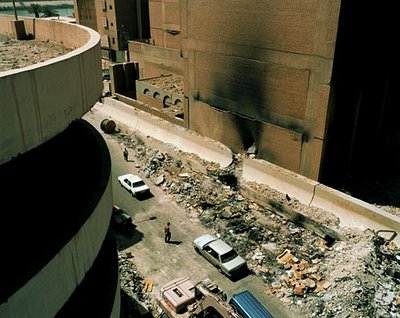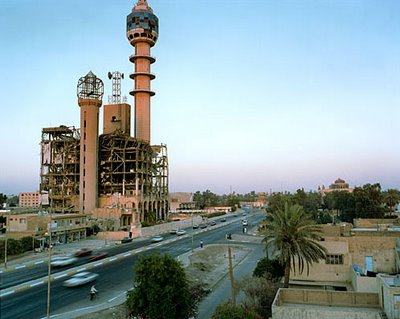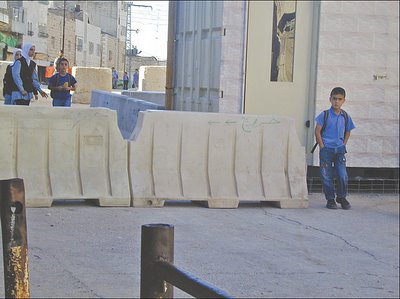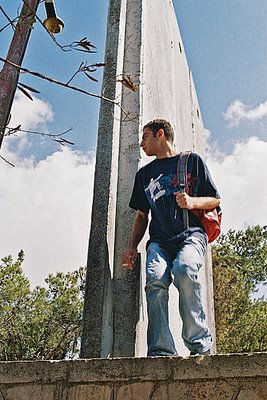Three Ehxibits: on Walls & Political Divide

Where Lines Are Drawn by sean hemmerle
Through Hemmerle's photographs the political situations are remarkably tangible–the sad and complex stories embodied. In these solitary, forsaken landscapes the streets are often dead ends marked by a cul-de-sac, a massive and improbable wall bisecting the street and blocking our visual line, it is an alien presence which has grudgingly become accepted into its surroundings.
In each of these places Hemmerle's photos show the physical manifestation of ideological differences and the political desperation, that once deemed intractable, are made concrete and expressed through the architecture of walls and barriers. Through Hemmerle's photographs it becomes apparent that each place, while unique, shares a common malady. These are similar microcosms of societies at loggerheads, with temporary societal band-aids erected over larger cultural divides. By photographing international zones of contention he shows the landscape of discord, and the architecture erected for this specific division.




More Hemmerle Work:
(Review by Thomas Micchelli) | THE TWIN TOWERS | The American War on Terror: Iraq | Secret Collaborators | What the Killers Saw
--

Students Under Occupation: Photographs from the Right to Education Photography Project

A group of student photographers from two Palestinian universities in the West Bank (Birzeit University near Ramallah and Al-Najah University in Nablus) came together to work on the Right to Education Photography Project. Their aim was to document student life and the obstruction of Palestinian education under military occupation, through the artistic expression of their own ideas and experiences.

As well as capturing the major obstacles to pursuing an education in occupied Palestine – obstacles that include routine harassment and arrests of students by Israeli soldiers and the daily struggle to reach school and university under a regime of military checkpoints - the photographers also reflected on some of the less visual aspects of student life under occupation. The photographs in this book touch on themes as diverse as isolation, poverty, resistance, absent classmates, military barriers, student prisoners and determination.
--

The Wall and the Checkpoints: Emily Jacir, Tareq al Ghoussein, Rula Halawani & Dana Erekat
Four artists interpret “the wall” and translate life across the many checkpoints throughout their occupied homeland – Palestine.

In the two-channel video installation "Crossing Surda (a record of going to and from work)," Emily Jacir offers perhaps the most recognizable interpretation of land divided up into physical boundaries, while In her installation "Where We Come From"; consisting of photos, related texts, and a DVD projection, the artist documents the wishes and the fate or status of people who are not allowed to cross the checkpoints, and then what she did in order to fulfill each wish.

In her series of photographs, Rula Halawani follows the construction of “the wall” which divided her road to work. In her images the skies are weighed down with fear and ugliness, but one can sense the artist’s promise to her homeland.
Tareq al Ghoussein’s images investigate barriers, land, longing and, ultimately, belonging, evoking the artist’s awareness as to how these inform, shape and define each other.
Dana Erekat’s photos capture with simplicity and depth how at a time when the occupied land’s Road Map is being redefined by walls, barriers, and destruction, the human body and mind adapt to these physical barriers: braving the threat of insanity by confinement and the threat of a soldier’s bullet, while waiting to cross.
(Review by Maureen Clare Murphy; Ica Wahbeh; Rula Halawani)







0 Comments:
Post a Comment
<< Home